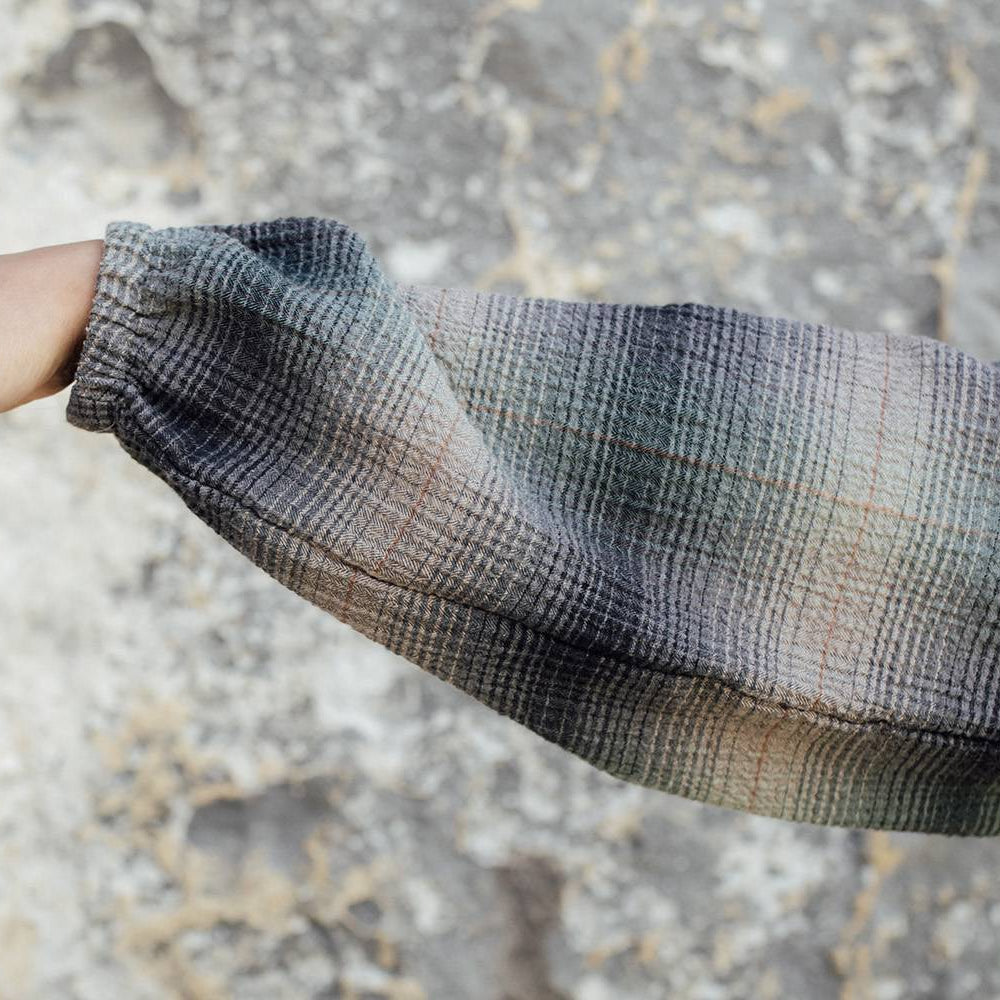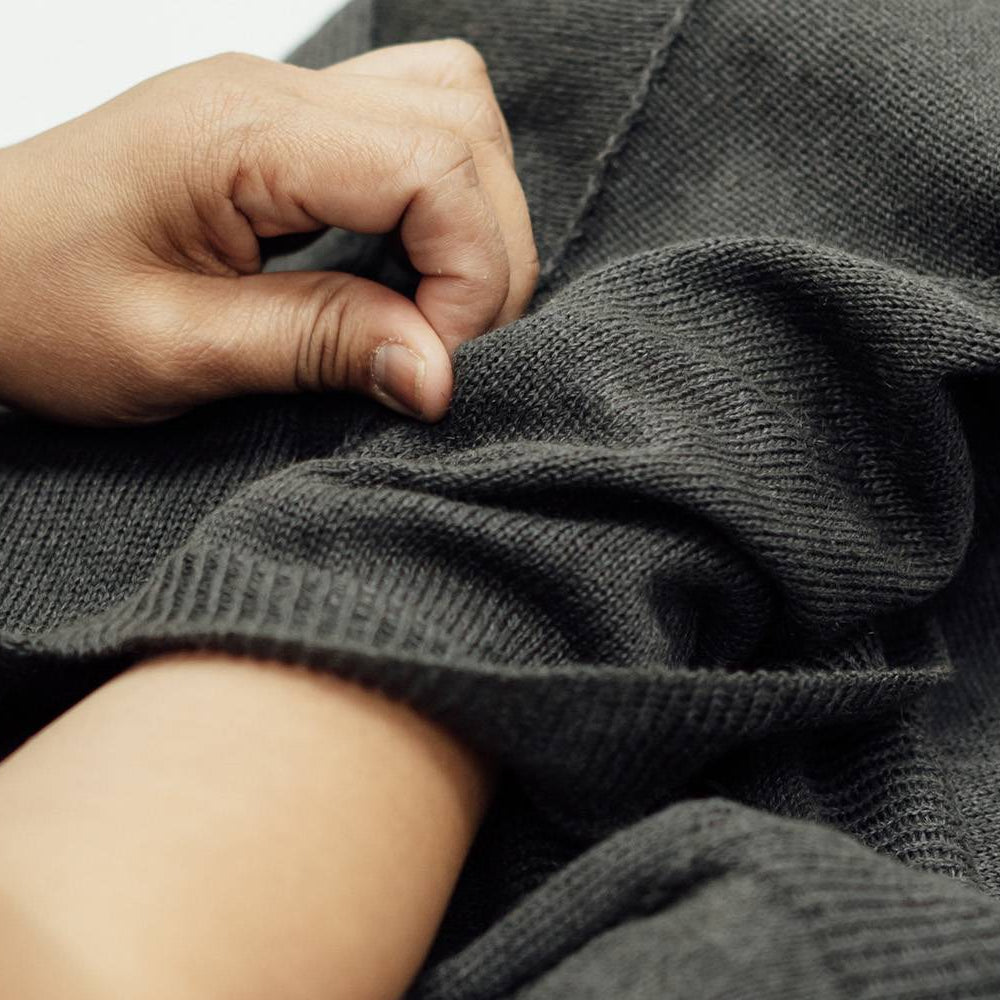Micro Pollution.
It's no secret that plastic pollution poses a significant threat to our environment and our aquatic ecosystems, but what does fashion have to do with it?
When we talk plastic, most of us immediately think of the obvious stuff like plastic bags and bottles, but there's a whole world of plastic we can't see and we're washing it down the drain. It's referred to as micro pollution.
How fashion contributes to the plastic problem.
Synthetic fabrics are responsible for the majority of microplastics in the environment today, which is why garments made from natural fibres are the best option for truly sustainable fashion.
Take a look through your closet and we're pretty sure you'll find some polyester, nylon, acrylic or similar. That activewear trend...well it's no planet's friend. Synthetic fabrics are just forms of plastic, made from petroleum or natural gas, and just like bags, bottles, and other more familiar forms of plastic, they’re not biodegradable. In other words, those fabrics will be around forever.
Just because synthetic fabrics won’t naturally decompose, doesn’t mean they’ll remain in great shape. As plastic fibres are exposed to elements like sunlight, they weaken and break up into smaller and smaller pieces, eventually becoming microplastics. Any time a synthetic fabric is worn or washed, it sheds plastic microfibres into the air or water.
So, how much do synthetic fabrics and their microfibres actually contribute to the overall problem of microplastics in the environment? Tonnes. Literally.
In 2022, a report on sustainable fashion discovered that textiles release between 200,000 and 500,000 tonnes of synthetic fibres into the marine environment globally. The report also cited a shocking study by ecologist Mark Browne, which found that the single greatest source of plastic in our oceans is tiny clothing fibres.
But how are these microfibres reaching our waterways? Marine scientists Imogen Napper and Richard Thompson set out to determine just that, and they found an average 6 kg load of laundry could release over 700,000 plastic fibres. Even more surprising, environmental chemist Francesca De Falco found that simply wearing synthetic garments releases just as many microfibres as washing them. Since both washing and wearing synthetic fabrics result in polluted waterways, she concluded that the only way to limit this is to change textile design entirely.
As alarming as this is, many brands still use synthetic materials in their designs. The world of fast fashion in particular relies heavily on cheap polyester, with the added disadvantage of it having a short lifespan. One study showed synthetic garments release more microfibres the first few times they are washed, which means not only will fast fashion garments release hundreds of thousands of microfibres during their first washes, they’ll also last only a few wears before needing to be disposed of and replaced.

Wear Natural Fibre Garments to Combat Microplastics
Now, because synthetic fabrics are so widespread in the fashion industry, you might be thinking that shedding microfibres is just a part of modern life. Not so! You can help combat the microplastics in the environment by wearing natural fibre garments.
While garments made from natural fibres still shed during wash and wear, the fibres that are released are biodegradable and will return valuable nutrients to the earth. Unlike synthetic fabrics, natural fibres will decompose in soil and water in a matter of years. Plus, quality natural garments are more durable and will remain usable much longer, keeping them out of landfills and reducing the need to replace them.
Sustainable fashion is possible, and it’s what we work hard to create here at Untouched World. Most of our fabrics are made entirely from natural fibres like merino, possum fibre, cotton, or plant-based fibres. 94% of our garments are completely free of microplastics, meaning you can wash and wear our clothing without worry. And the other 6%, well we're working on it. After all, it’s been our mission since day one to provide high-quality, timeless pieces that are both comfortable and kind to the planet.
To learn more about fashion’s role in the microplastic issue, read the studies here:
- Veronica Bates-Kassatly and Dorothee Baumann-Pauly, The Great Green Washing Machine Part 2: The Use and Misuse of Sustainability Metrics in Fashion
- Mark Browne et al., Accumulation of Microplastic on Shorelines Woldwide: Sources and Sinks
- Francesca De Falco et al., Microfiber Release to Water, Via Laundering, and to Air, via Everyday Use: A Comparison between Polyester Clothing with Differing Textile Parameters
- Nike Hartline et al., Microfiber Masses Recovered from Conventional Machine Washing of New or Aged Garments
- Imogen Napper and Richard Thompson, Release of Synthetic Microplastic Plastic Fibres from Domestic Washing Machines: Effects of Fabric Type and Washing Conditions















